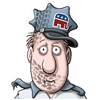From design to photography: How various creative tools are incorporating generative AI
Published in Slideshow World
Subscribe
From design to photography: How various creative tools are incorporating generative AI
Artificial intelligence is everywhere. Recent cover songs, résumés, web design, animation, and even voiceovers all have generative AI fingerprints. Creative industries are witnessing a rapid shift in process and production, while artists and creators have pushed beyond what was possible just a year ago.
And change shows no sign of slowing down.
While today's technology is evolving at a blistering pace, driven by stronger computing power and datasets, it's also the direct result of years of slow and steady innovation. Take AI image generation, which dates back to the 1960s when an artist at the University of California at San Diego started developing software that used coding to draw art. Producing sophisticated and hyperrealistic images using AI wouldn't be possible without existing digital applications.
Consider Adobe Photoshop, which has enabled both professional and amateur graphic designers to create, edit, and finesse or modify image imperfections using the "smudge tools" and "healing brushes." Generative AI has both enhanced these tools and developed newer, more refined ways to modify images.
At the same time, generative AI has accelerated productivity while also democratizing access to creative tools that expedite workflows. Amateurs have the chance to create without specialized skills, and creators without coding experience to use AI-powered platforms to develop basic apps, reducing the barrier to entry for tech-related projects.
Meanwhile, existing applications and products are adopting and integrating generative models, enhancing their functionality, and expanding their user bases. By making high-quality image generation more accessible, standards and expectations will also be higher.
As innovation continues, it will impact not only how industry professionals work but also how everyday consumers—writers, designers, and artists from across the spectrum—express themselves.
Creatie.ai looked at news reports and company announcements to see how generative AI is changing creative tools.
Visit thestacker.com for similar lists and stories.
The recent history and developments of AI generation
Generative AI has the capacity to apply knowledge across varied tasks, coming up with unanticipated outcomes—but could it capture the whimsy and spontaneity of authentic creativity?
That was one question at the beginning of 2021, when OpenAI combined GPT-3—then the most powerful language model—with Image GPT-3 to create DALL-E and CLIP. The two new models marked significant enhancements in AI's comprehension of words and what they refer to. Though GPT outputs often presented images that felt distorted from reality, researchers built these models to better grasp everyday concepts.
While CLIP learned to associate images with their captions by predicting which caption matched a given image, DALL-E drew images from textual descriptions, creating visuals for imaginative prompts… like "avocado armchairs."
To test its efficacy, researchers gave it captions describing objects and scenarios they believed it wouldn't have processed previously. The results were mixed—messy but recognizable.
"The thing that surprised me the most is that the model can take two unrelated concepts and put them together in a way that results in something kind of functional," Aditya Ramesh, who worked on DALL-E, told MIT Technology Review in January 2021.
Many experts believe grounding language in visual understanding helps develop smarter AI systems. The emergence of DALL-E and CLIP represented significant strides in this direction.
By the end of 2022, ChatGPT had launched, changing the game again. Like image generation, the free software functioned much like a chatbot, responding to user prompts in detailed, conversational text-based answers. Need an article summarized? Need a ranked list of travel destinations? Maybe a recipe for a popular dish, or even a résumé?
Within five days, ChatGPT attracted over a million users—it could even pump out short stories in the style of famous authors, not to mention poems, letters, and essays. Its success has paved the way for AI researchers to build and refine large language models that can understand and generate text. These, in turn, are spurring transformation across various industries, including marketing, education, and design.
Marketing companies, for example, are already utilizing AI to produce consumer-facing content, such as web copy and blog and social media posts. A 2022 Harvard Business Review report highlighted how global food corporations Heinz and Nestlé have used AI generation to build out video ad campaigns, using DALL-E 2 to render an array of illustrated ketchup bottles.
Two years since its debut, ChatGPT even looks to outdo Google as the top online search engine technology.
Pros and cons of generative AI
It was long believed that creative work would always be safe from automation, but generative models have challenged this assumption. Generative AI has the potential to automate 26% of professional tasks and tools in the arts, design, entertainment, media, and sports sectors, according to a 2023 Goldman Sachs report on the economic impact of AI.
While AI is encroaching on creators' territory, it also offers the promise of enhanced productivity, efficiency, and profits. Added to an artist's toolbox, AI tools can facilitate many existing tasks: generate first drafts of images, create product and app prototypes, facilitate brainstorming, or execute specific tasks.
For instance, in October 2024, Adobe unveiled Project Turntable, a feature for its Illustrator app that uses AI to fill in the gaps of an image. The project allows users to "easily rotate 2D vector art in 3D, and it'll still look like 2D art from any new angle." This could have major implications for illustrators, graphic designers, and other visual artists.
In creative industries, the top three most common uses of AI for work today are idea generation (61%), enhancing images and audio (54%), and improving productivity (52%), according to a 2023 World Economic Forum report. These can be attributed to the rapid and detailed outputs from ChatGPT and generative AI image and video creators (DALL-E and Sora).
Sentiments among entertainment industry leaders about AI were generally positive. In a 2024 survey from United Talent Agency's research and strategy division, entertainment and marketing creatives saw AI as a way to "enhance" rather than "replace" human creativity. Eighty-one percent of those surveyed believed AI would make more things possible in their work, while nearly 3 in 4 (73%) believed it would elevate their work.
Still, concerns about protecting creatives' rights persist. Seven in 10 (71%) respondents in the UTA study also support increased AI regulation (a sticking point in negotiations during the Writers Guild of America and SAG-AFTRA strikes of 2023), partly because of the threat of digital and vocal replication.
Survey respondents also anticipated AI growth would "prompt a pendulum swing back to valuing uniquely human creativity and experiences, such as random inspiration, IRL experiences and nostalgia for analog mediums."
The future of generative AI is uncertain, but it's here to stay
There is legal uncertainty around AI and its role in licensing and copyrights. In January 2023, three artists filed a lawsuit against three AI organizations—Stability AI, Midjourney, and DeviantArt—for infringing on the rights of millions of artists by training AI tools on 5 billion images from the web without the original artists' consent.
Many AI art generators replicate and mimic the style of specific artists; still, many creators argue this practice on copyrighted material falls under the fair use doctrine, which allows limited use of copyrighted material without its holder's permission.
Numerous other suits have been filed against similar AI companies, alleging they've been illegally trained to scrape and mine volumes of copyrighted work.
Beyond legal battles, ethical questions about the use of AI art loom. What are the implications of replicating someone's likeness and voice for nefarious purposes? Ethical concerns even apply to deceased artists, whose estates lose out on royalties when covers of their songs are produced without permission.
An October 2024 survey from British online retailer musicMagpie found an estimated 1.63 million AI-generated cover songs on YouTube alone. Frank Sinatra, Freddie Mercury, and Kurt Cobain are the mostAI-plagiarized artists.The retailer also estimates these legacy artists have lost more than $13.5 million—after including Spotify in its calculations.
There's also an existential debate about human authenticity versus synthetic production. Are songs that pull from specific singers or songwriters what musician and writer Nick Cave called "a grotesque mockery of what it is to be human"? These thorny issues will remain as AI models and deep-learning tools exponentially grow and outpace current legal precedents.
Ultimately, artists themselves will determine what the future looks like, whether that's through lawsuits and regulations or the slow acceptance of generative AI as an additive part of the creative process. The future may be uncertain, but AI will undoubtedly be part of it.
Story editing by Alizah Salario. Additional editing by Kelly Glass. Copy editing by Paris Close. Photo selection by Clarese Moller.
This story originally appeared on creatie.ai and was produced and distributed in partnership with Stacker Studio.










Comments